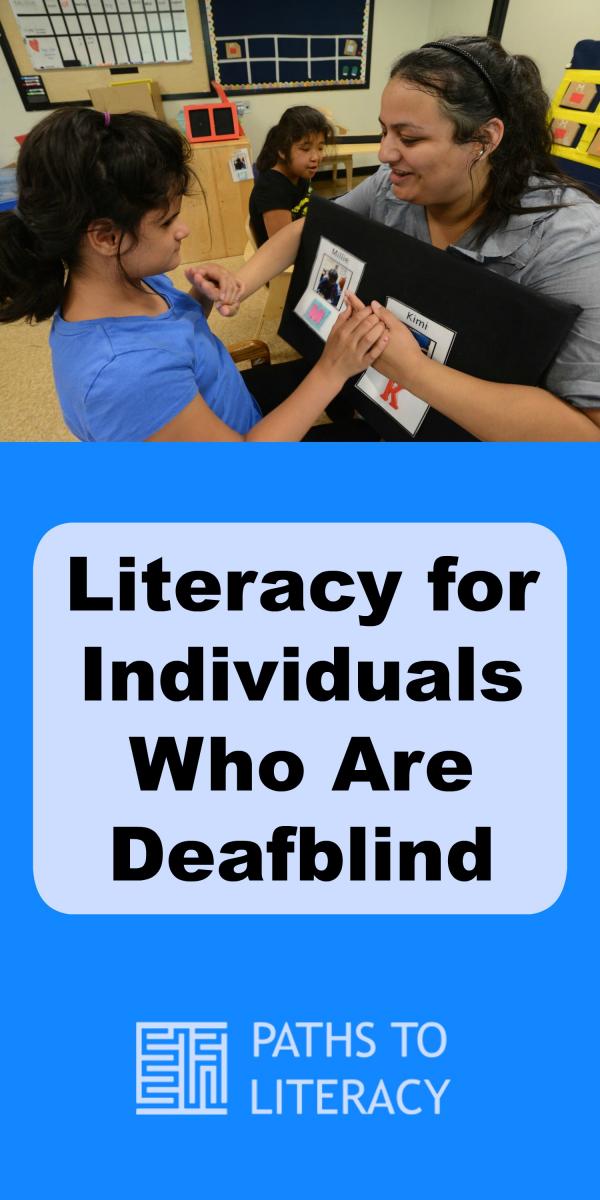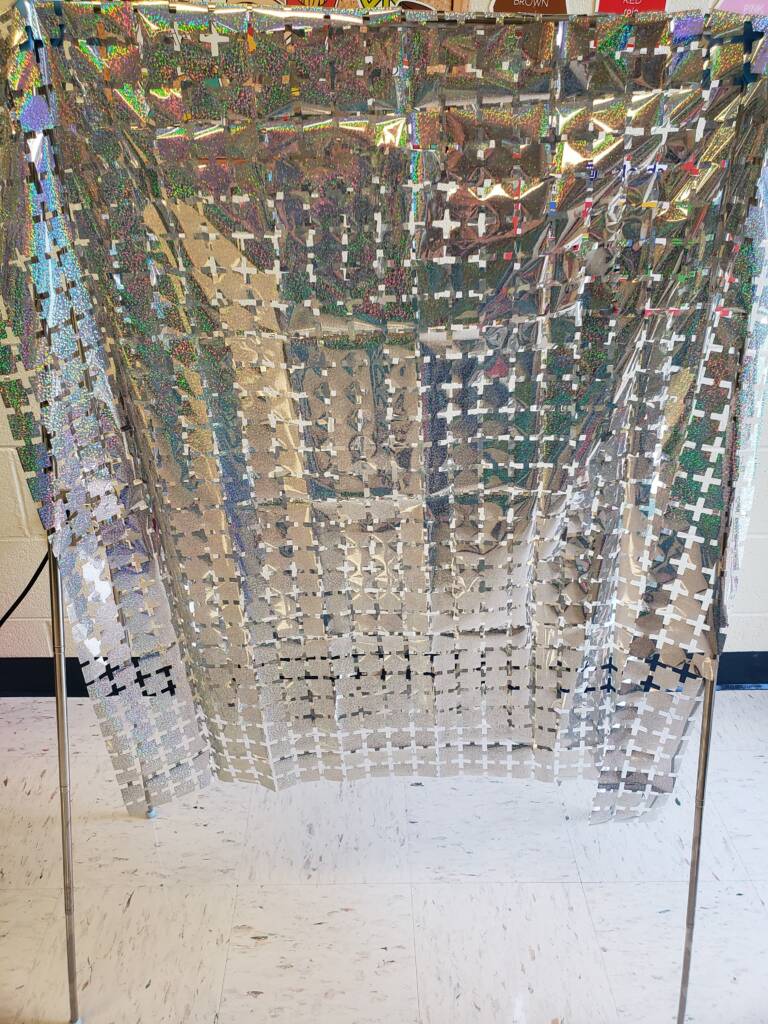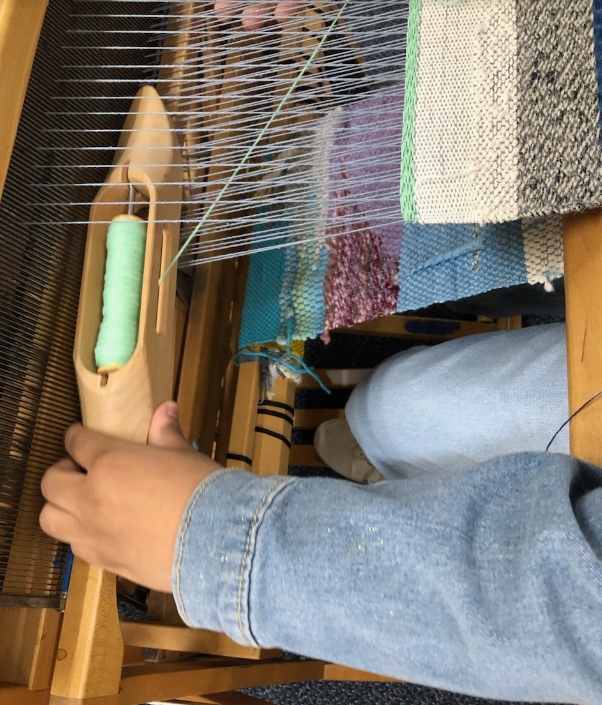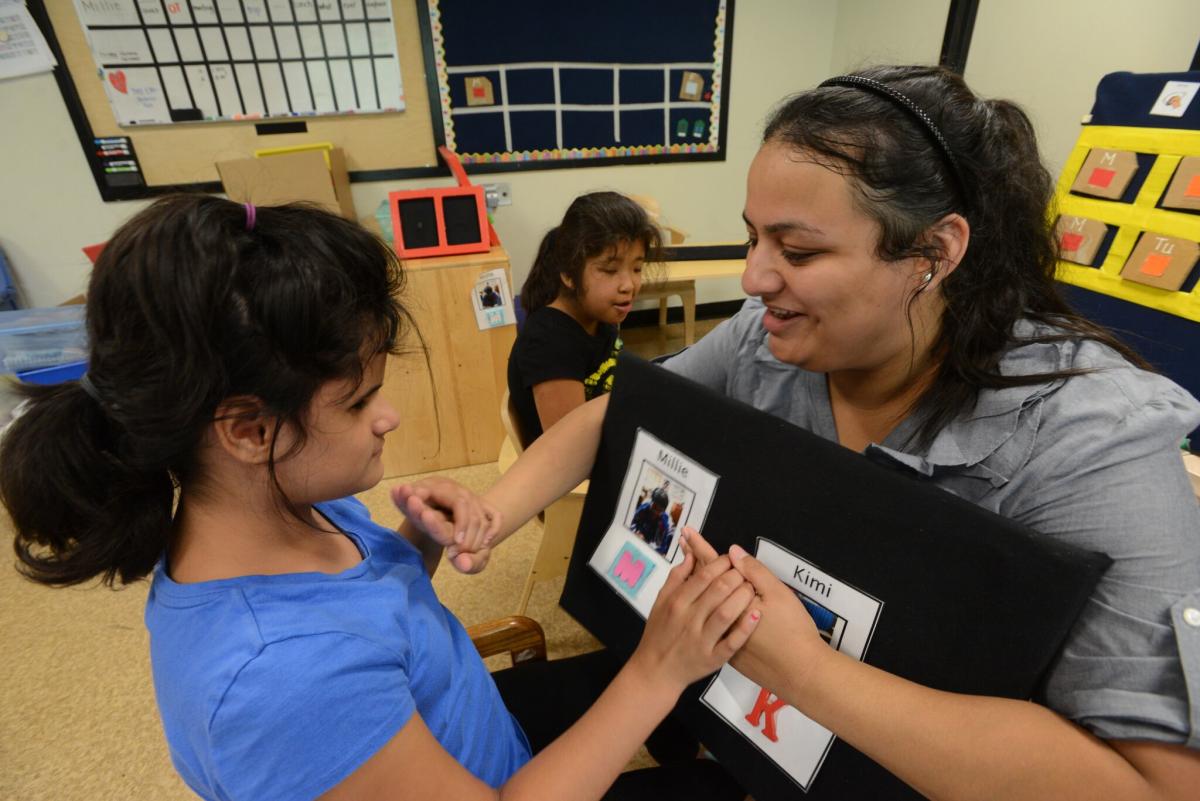 Deafblindness refers to a combined vision and hearing loss, but the effects vary extremely widely, depending on a number of factors. A child who is deafblind may be able to read print and use speech to communicate or she may be a braille reader who is profoundly deaf. Frequently children and youth who are deafblind have additional disabilities and may not use symbolic communication. Regardless of the particular situation for a given child, dual sensory impairment has a profound effect on learning, especially in relation to communication and concept development, which are the foundations of literacy.
Deafblindness refers to a combined vision and hearing loss, but the effects vary extremely widely, depending on a number of factors. A child who is deafblind may be able to read print and use speech to communicate or she may be a braille reader who is profoundly deaf. Frequently children and youth who are deafblind have additional disabilities and may not use symbolic communication. Regardless of the particular situation for a given child, dual sensory impairment has a profound effect on learning, especially in relation to communication and concept development, which are the foundations of literacy.
Considerations Affecting the Impact of Deafblindness
Specific considerations which will help to determine the effect of the combined vision and hearing loss include the following:
- How much vision does the individual have?
- How much hearing does the individual have?
- Is either of those losses progressive?
- Are there medical considerations that affect learning?
- Are there additional disabilities?
- At what age did the individual lose vision and hearing?
- Are assistive devices being used consistently?
- How does the individual communicate?
Resources on Literacy for Students Who are Deafblind
- Observation of significant people reading and writing for a variety of purposes
- Meaningful conversations during literacy experiences
- Accessibility of literacy materials
- Connection of literacy to experiences and interests
- Regular opportunities for independent use of reading and writing materials
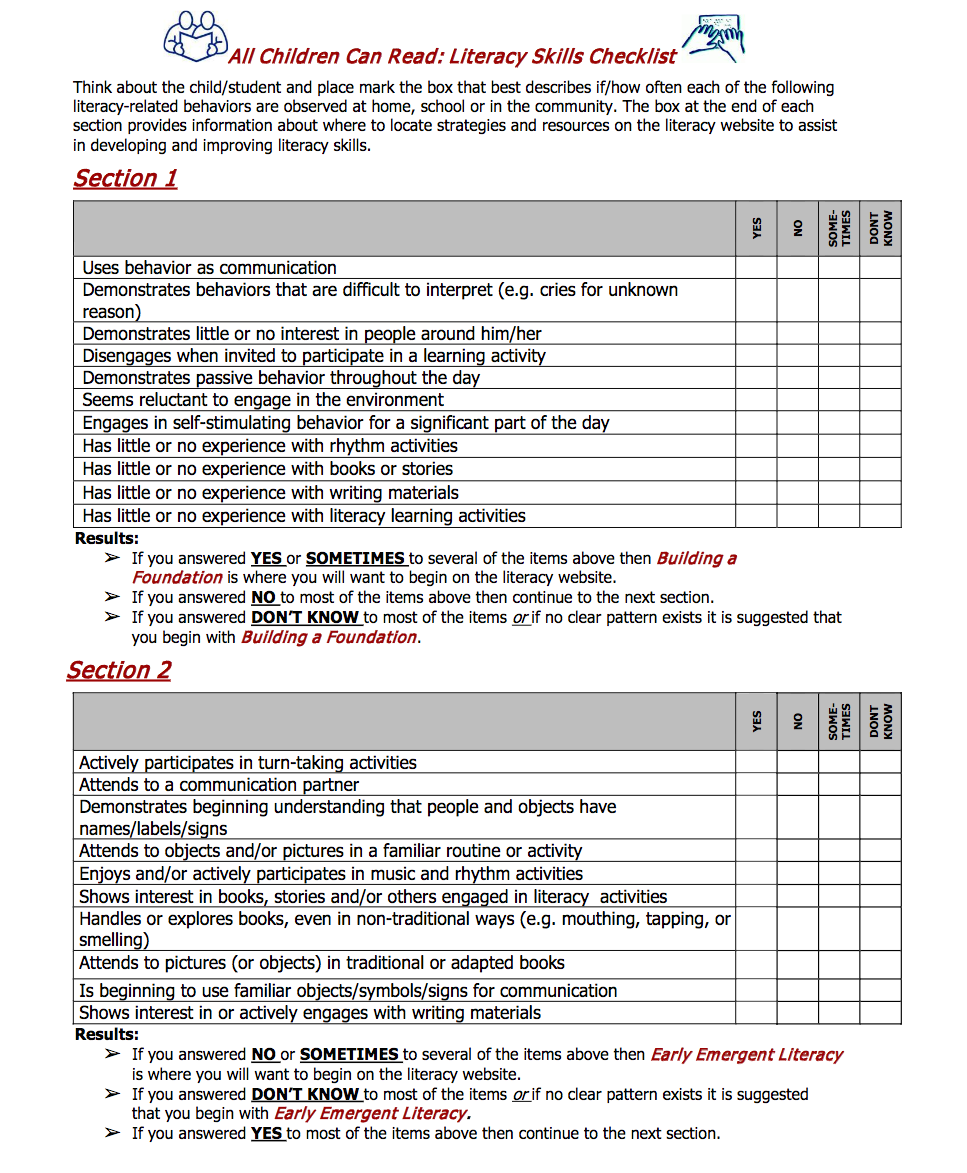 This website is entirely devoted to literacy and deafblindness. It includes a Literacy Skills Checklist, which can help direct users to the most relevant parts of the website.
This website is entirely devoted to literacy and deafblindness. It includes a Literacy Skills Checklist, which can help direct users to the most relevant parts of the website.- Building a Foundation
- Early Emergent Literacy
- Emergent Literacy
- Writing
- Vocabulary Development
- Comprehension
- Increasing Fluency
- Expanding Fluency
- Planning
Functions of Reading and Writing—the WHY
| Function of Reading/Writing | Example for student who is Deafblind |
| Organizing and supporting memory | calendars, lists |
| Acquiring information | newspapers, phone books |
| Instructions | recipes, directions |
| Financial negotiations | checks, bank statements |
| Entertainment: comic books, magazines, internet | |
| Identifying things or places signs, labels, packages | |
| Self-expression, dealing with emotions | |
| creating/maintaining relationships | |
| letters, journals, emails |
